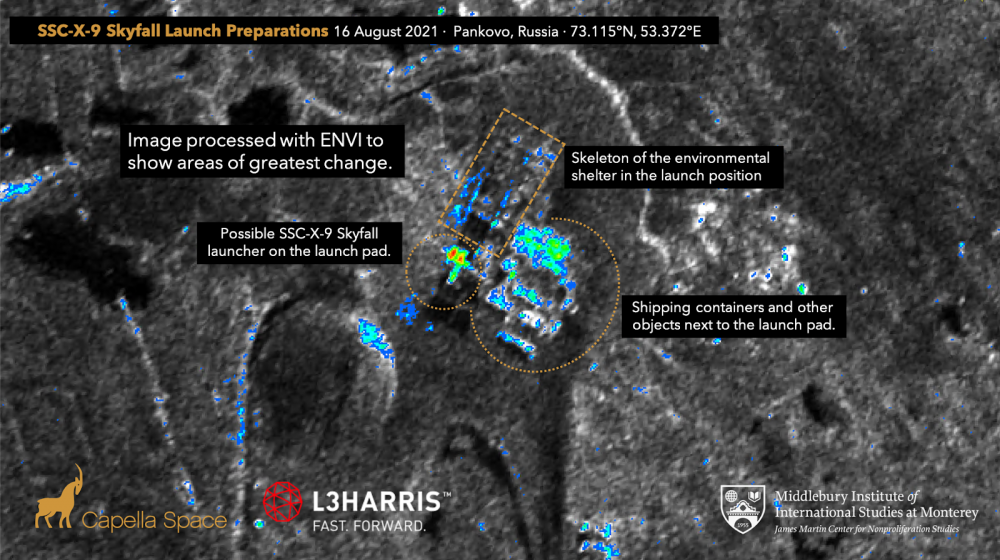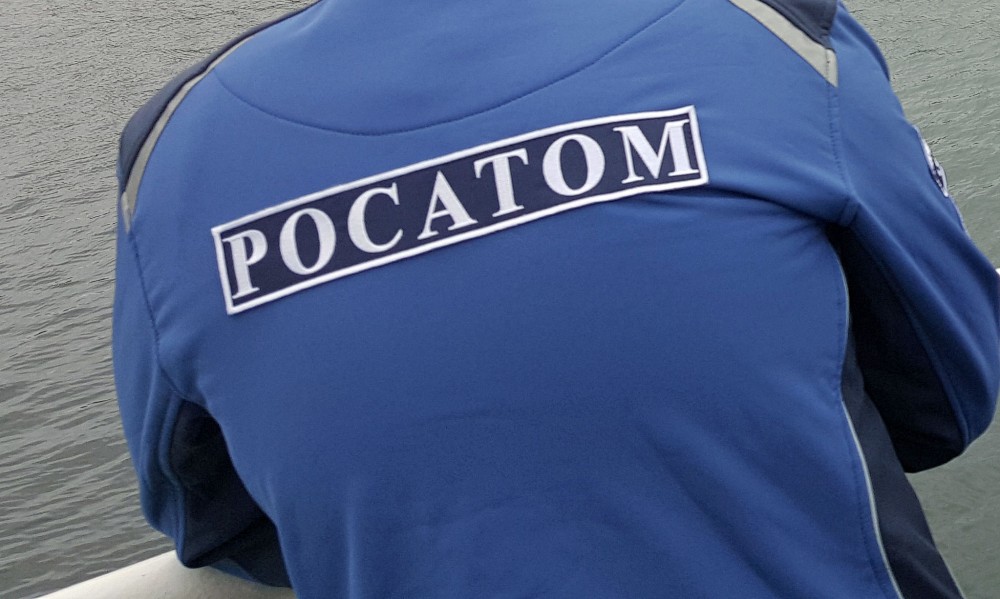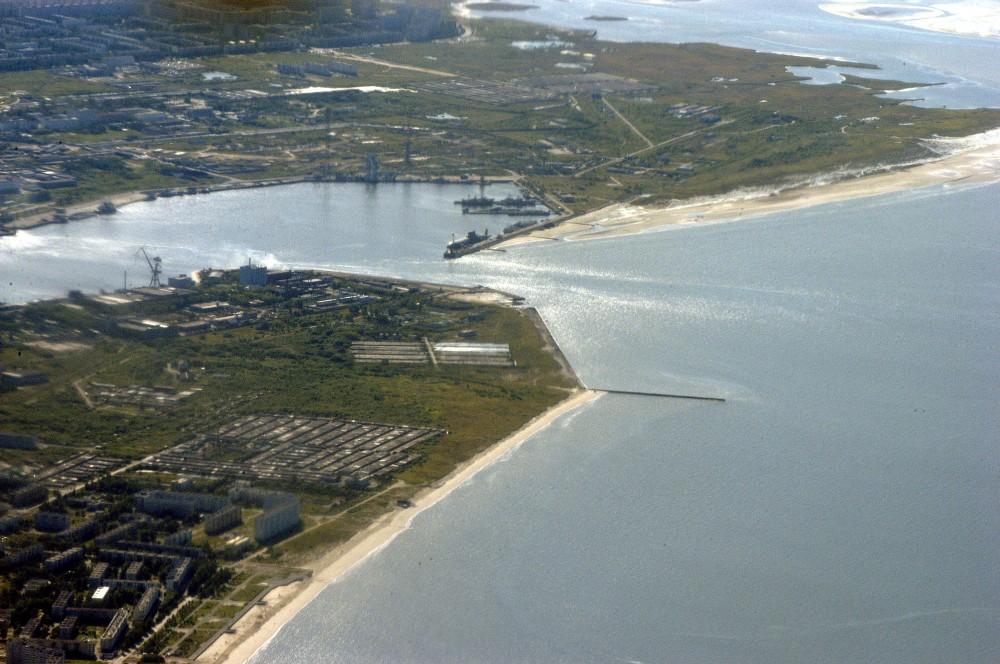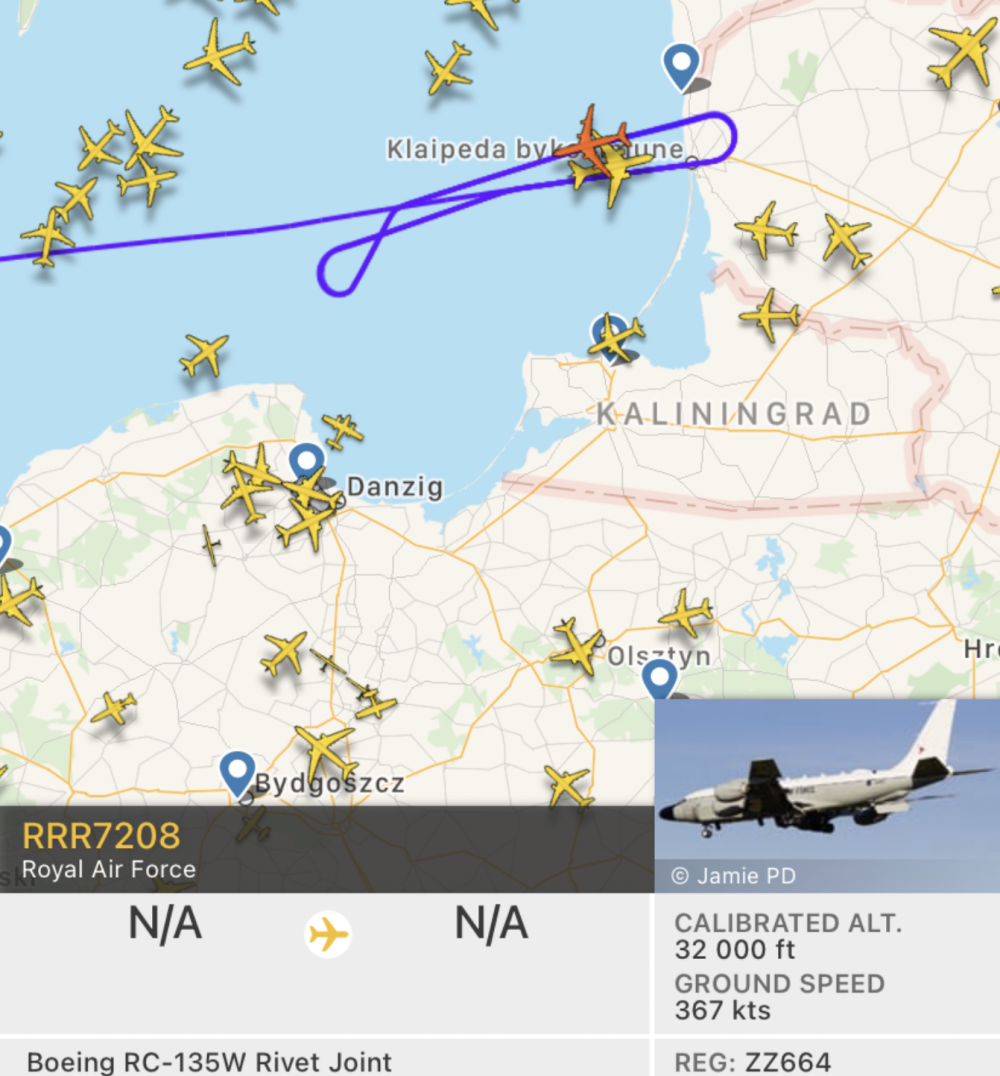
Russia readies Burevestnik testing at Novaya Zemlya
A large area in the eastern Barents Sea is closed off and new satellite images show massive activity at Pankovo, Russia’s test launch site for the nuclear-powered cruise missile.
The satellite images, analyzed by the Middlebury Institute of International Studies show how weapons-testing engineers have worked intensively over the last few months to make ready the shelter facility, shipping containers and other objects next to the launch pad.
Pankovo is the same location from where the 2017 Burevestnik launch to place, a weapons test that made worldwide headlines when displayed by President Vladimir Putin in his annual state-of-the-nation speech in March 2018.
Among other new nuclear weapons systems, Putin bragged about Burevestnik, saying it was an un-stoppable nuclear-powered cruise missile with nearly unlimited range. What the president didn’t say was the at least one of the tests is rumored to end badly with the missile crashing in the Barents Sea.
The Barents Observer has via online AIS shipping services tracked at least two cargo ships staying stand-by outside the Pankovo site on the western shores of Novaya Zemlya, a few tens of kilometers south of where Russian nuclear weapons designers are conducting sub-critical tests in tunnels into the mountains.
Obtaining information on what’s going on here is a puzzle consisting of many different sources, including vessel traffic services, satellite images, NOTAMs (Notice to Airmen), Notice to mariners, media reports and publicly available military announcements. Work on re-establishing the facilities at Pankovo started last summer and autumn, as previously reported by the Barents Observer.
This part of Novaya Zemlya in the Arctic is the world’s largest military closed-off area, totally in the hands of Russia’s nuclear weapons complex.
“Pretty soon, other open-source indicators showed that a launch was imminent,” Dr. Jeffrey Lewis writes in a tweet. Lewis is Director of the East Asia Nonproliferation Studies at the Middlebury Institute of International Studies at Monterey.
It was CNN that first reported about the Institute’s analyses of the new satellite images.
Dr. Lewis and his colleagues have processed satellite images taken as late as August 15, showing that the skeleton of the shelter for the Burevestnik missile at the pad is in launch position.
“This shelter was retracted revealing a large object on the launch pad which is a possible SSC-X-9 Skyfall launcher,” he writes at the blog site Arms Control Wonk.
SSC-X-9 Skyfall is the NATO classification of what Russian weapons developers have named 9M730 Burevestnik.
The crazy feature of the missile, built to carry a nuclear warhead, is the built-in mini-size nuclear reactor supposed to provide a range far longer than any previous non-ballistic cruise missiles ever have seen. Radiation challenges, however, are obvious: For size and weight reasons, such a small airborne reactor has limited possibilities to hold a closed cooling circuit, likely causing radioactive isotopes to be released into the atmosphere.
Radiation accidents
Secondly, testing such a flying reactor is risky. It will eventually have an impact zone, whether crashing at sea or ground as planned or by accident mid-air. The infamous accident in the White Sea outside the Nenoksa test site in 2019 happened on a barge during the salvage work of a crashed Burevestnik missile. Five Rosatom experts were killed after the explosion, which also caused a spike in radiation over the nearby city of Severodvinsk.

Illustration photo: Thomas Nilsen
The Nenoksa radiation accident is likely one of the reasons for conducting further tests at the faraway remote Novaya Zemlya, where releases of radiation are unlikely to harm civilian population.
In Severodvinsk, public fear of a repeated accident at the military test site Nenoksa has several times triggered radiophobia, latest on Wednesday this week. To calm people down, local city authorities in charge of radiation monitoring invited media to come to see the hour-by-hour measurements, showing that levels did not rise above background radiation at any of the instruments in the well-equipped network in and around the city.
Severodvinsk is home to Sevmash and Zvezdocka, Russia’s main yards for the construction and repair of nuclear-powered submarines.

Also neighboring Norway, Finland and Sweden have expressed concerns for testing of weapons systems in the Russian north involving small nuclear reactors.
Last year, then-Director of the Norwegian Intelligence Service, Lt. Gen. Morten Haga Lunde, highlighted the danger in his annual open threat assessment analysis.
Big accident risks
“We must expect development and testing of new advanced weapons systems in the areas east of Norway. Several of these will have nuclear propulsion systems,” Haga Lunde said.
“The development will bring, additional to the military challenges, also challenges related to both environment and security. In 2019, about 25 Russians were killed during military activity near Norway,” the Intelligence Service Director said and added:
“I consider the risk for more such unintended incidents in our neighborhoods to be big in the years to come.”
NATO’s ‘nuke-sniffer’

Screenshot from FlightRadar24
Russia’s development and testing of new weapons systems are closely followed by NATO eyes. During the first week of August, the U.S. Air Force’s WC-135W, often referred to as the “nuke sniffer” made several missions over the Baltic Sea. The flight happened as the wind direction to the Baltic came from Russia’s northwestern region, including the White Sea area.
The plane carries measuring equipment to collect air samples to monitor for spikes in radiation levels. The same plane, flying out from the RAF Mildenhall airbase in the United Kingdom, has previously had intelligence missions over the Barents Sea.
U.S. Air Force, though, has not published any information about the nature of the flights.
Periodically, civilian radiation protection agencies measure isotopes at their air-filter stations around the Nordic countries. For week 31 (August 2-9), the Norwegian watchdog agency DSA reported findings of small levels of Iodine-131 at its station at Ørland, southern Norway. The DSA did not elaborate on possible sources for the isotope that has a half-life of only 7 days.
No comments:
Post a Comment